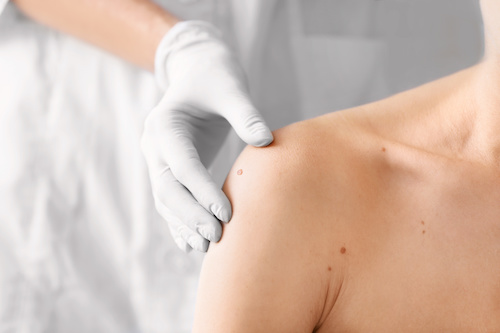The ability of the skin to protect from chemical exposure is something we inherit. Some people are less well-protected which could imply an increased risk of being afflicted by skin disease or cancer. A study from Karolinska Institutet in Sweden, published in Environmental Health Perspectives, shows how the rate of uptake of common chemicals is faster in people with a genetically weakened skin barrier.

The protein filaggrin (FLG) is important for the structure and moisture balance of the skin, properties that affect the skin’s ability to function as a barrier against chemicals. Earlier research has indicated that inherited variations of DNA sequences for filaggrin mean some people have less good “barrier protection” which leads to an increased uptake of chemicals. That could imply a greater risk of being afflicted by cancer or various skin diseases such as contact dermatitis.
Genetically Weakened Skin Barrier Leads to Faster Chemical Uptake
This genetic variation is relatively common in northern Europe and occurs in a person when one of the parents has the genetic predisposition in question. About ten percent of Swedes have this variation.
Researchers at Karolinska Institutet and Lund University have shown in a new study that this genetic variation leads to a considerably faster uptake of three common chemicals through the skin.
The researchers screened 500 people in Sweden. The results are based on 23 people with the mutation that causes a deficit of filaggrin, and 31 people who do not have it. The participants in the study were exposed to a harmless dose of three chemicals on their skin for four hours. The chemicals used for the study were a pesticide used in Sweden, a UV filter used in sunscreen, and a hydrocarbon found in, for example, smoke from firewood. The specific chemicals included:
- Pyrimethanil is a fungicide used in conventional fruit agriculture;
- Pyrene is a polycyclic aromatic hydrocarbons (PAHs) that occur naturally in coal, crude oil, and gasoline.
- Oxybenzone (termed benzophenone-3 in cosmetic products) is a UV absorber used in various cosmetic products for protection of skin and hair.
The researchers calculated the speed of uptake and the dose in the body with the help of urine samples taken from the participants during a period of 48 hours.

“We found, for example, twice as high a dose of the pesticide in the people with a mutation compared with those without. The fact that the skin takes up a greater amount of certain chemicals as a result of a genetic variation could mean that people with this mutation get a higher internal dose and, in the long run, could be at greater risk of disease such as cancer or a hormonal disorder,” says Karin Broberg, Professor at the Department of Environmental Medicine, Karolinska Institutet, and the study’s last author.
She continues: “For the next step, we are planning to investigate whether the mutation affects the uptake of other chemicals in the skin. We also want to find out whether these mutations lead to disease caused by chemicals in the body and in the skin.”
Conclusion/ The researchers concluded: “Our results show that FLG null carriers were more susceptible to dermal absorption of three common chemicals. Overall, FLG null carriers showed the shortest lag time for skin absorption, the highest rate constants for skin absorption, and higher fractions of the applied dose excreted. Further, our results indicate that low CNV resulted in increased dermal absorption of the chemicals. Gaining knowledge about what FLG null mutations and CNV mean for dermal absorption is important to better understand skin barrier function and the preventive and protective measures and guidelines that should be implemented by authorities, caregivers, and employers to decrease skin exposure and skin absorption, such as imposing limit values for dermal exposure to consumer products and occupational chemicals and advising people to reduce their dermal exposure to certain chemicals.”
Click Here for Full Text Study




